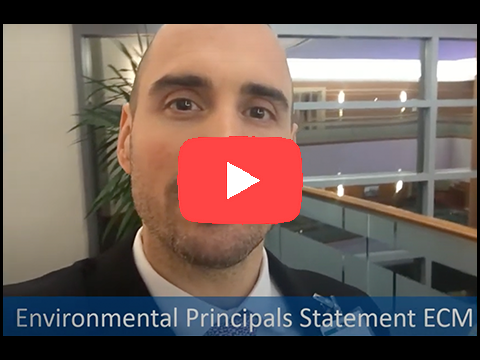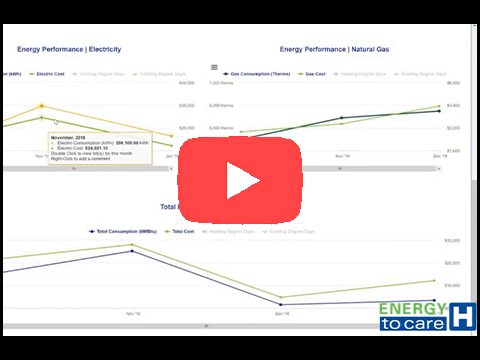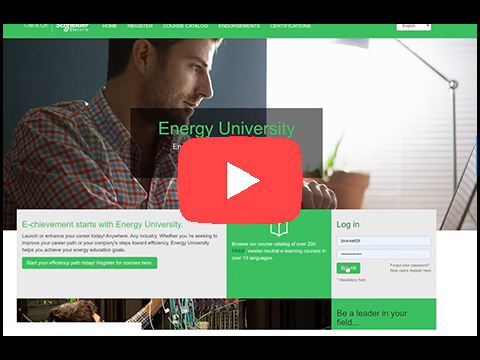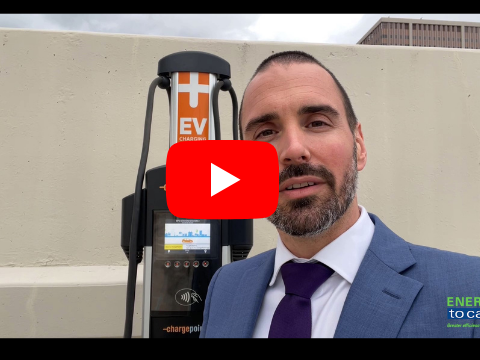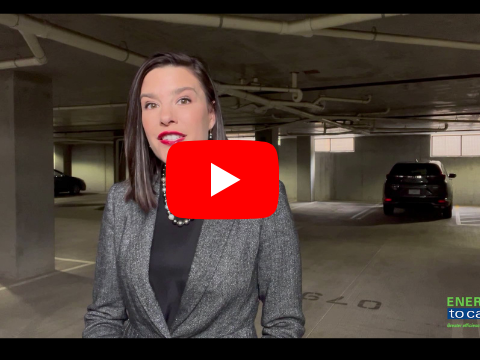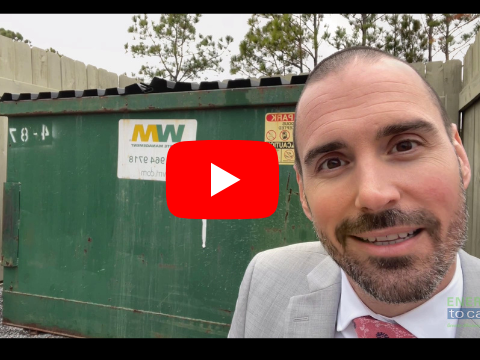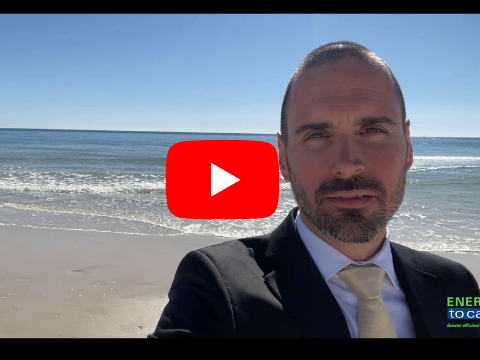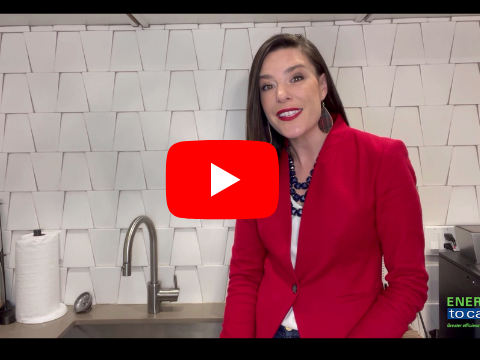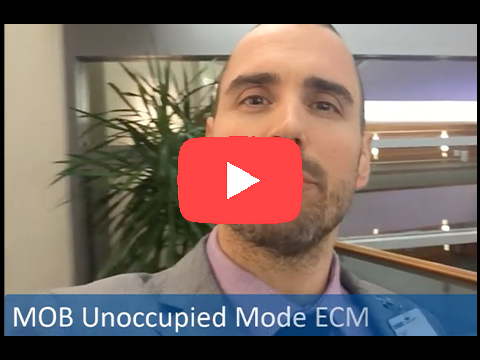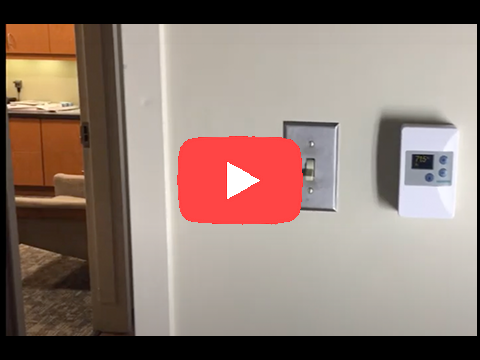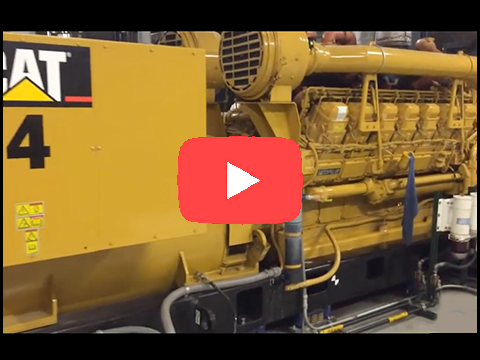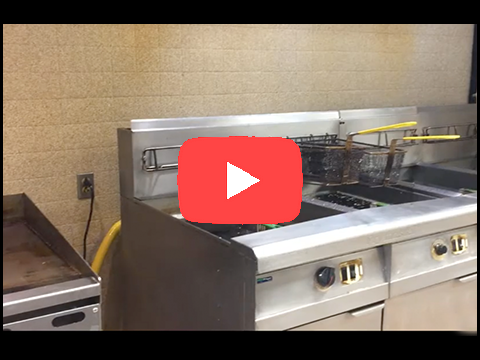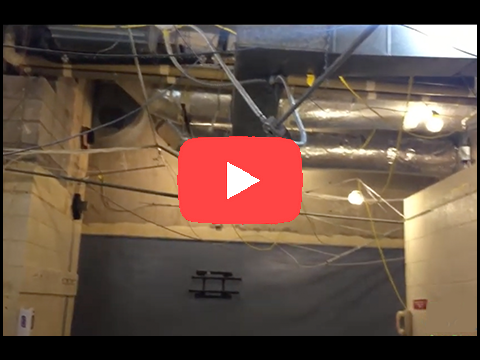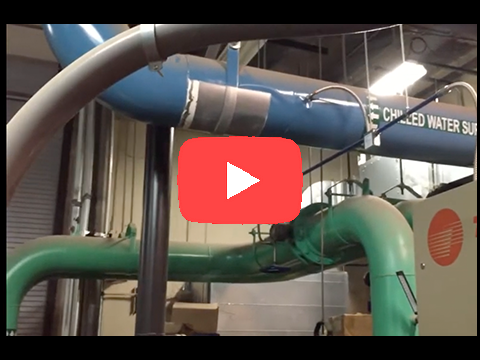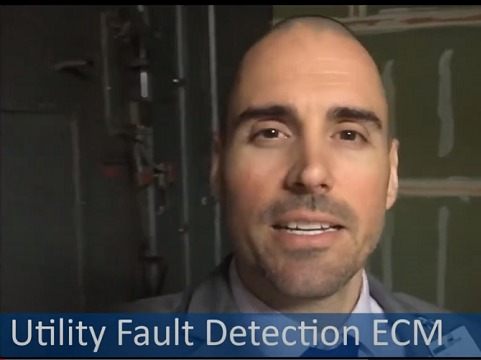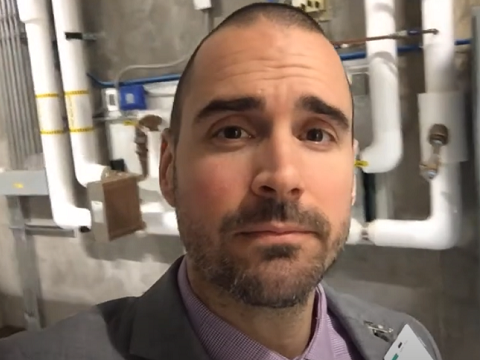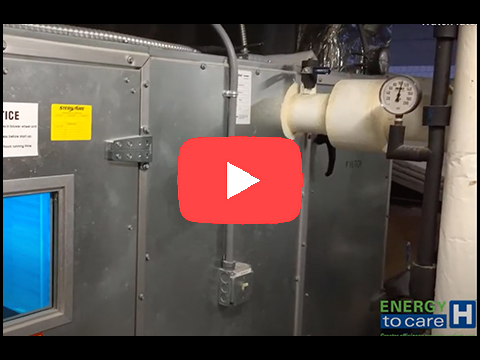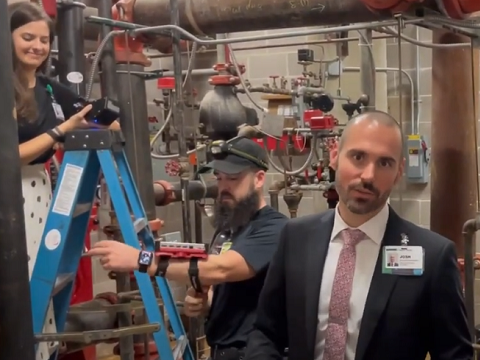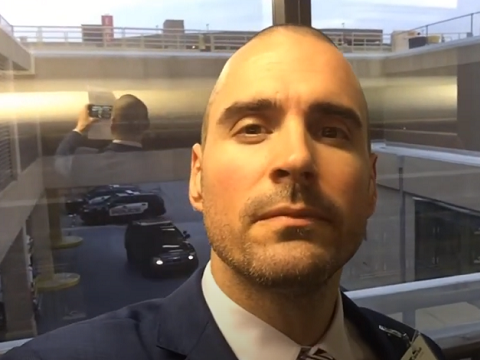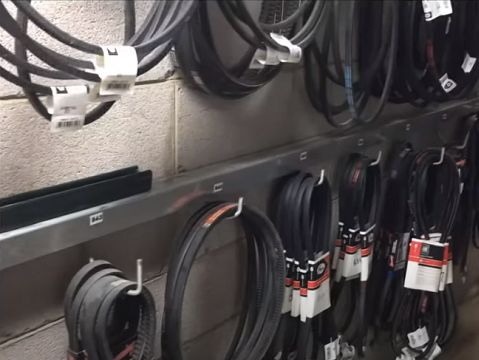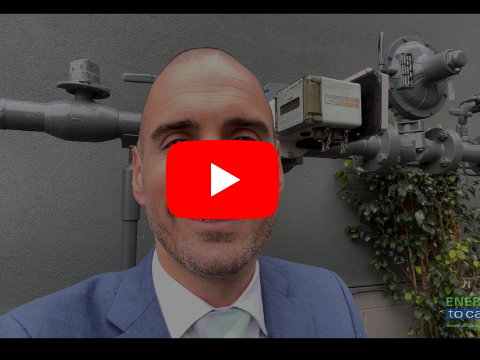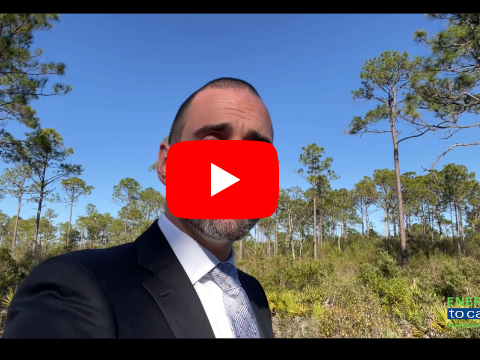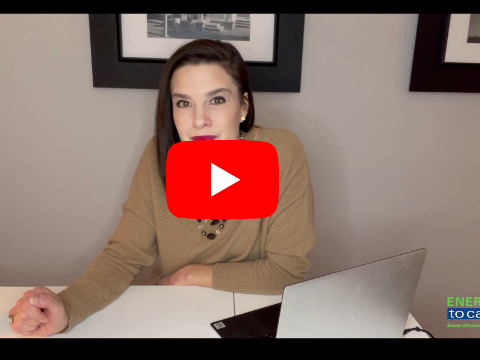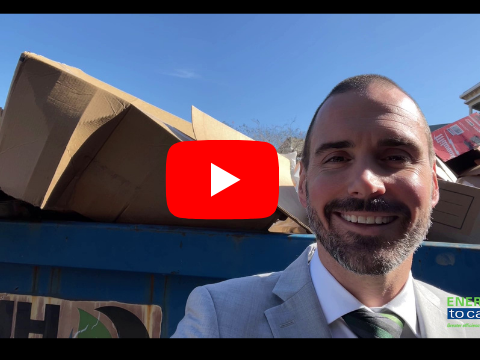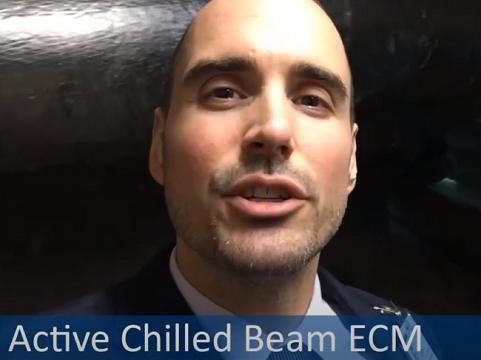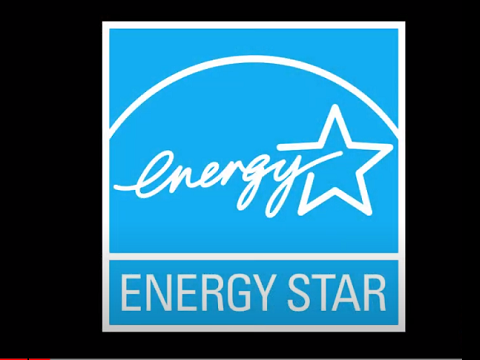
Energy Conservation Measures (ECMs)
.
Energy Conservation Measures
ECMs are reliable, unbiased resources that can help organizations integrate sustainable practices into the health care environment. Review strategies and energy conservation measures (ECMs), or how-to guides, to get started on your journey toward sustainability for your health care facility.
Energy Gap Analysis Tool & ECM Support Handbook
ASHE members can access the Energy Gap Analysis Tool to assess where their organization stands on adoption of the most common energy conservation measures. This tool is solely focused on energy, not all ECMs.
Members and non-members can access the ECM Support Handbook for free from ASHE. This handbook has 52 actionable ECMs across eight categories.
Video Only
Access the entire ECM playlist on ASHE's Youtube.
Actionabilities
A sustainability statement that is endorsed by facility leadership outlines guiding principles and commitments for sustainability program management. The statement can include specific commitments to environmental considerations (e.g., commitments to clean water and air),specific programs (e.g., energy reduction, water conservation, waste minimization, source reduction or chemical reduction programs) and/or target goals to reduce use of energy, water and chemicals and to increase reuse and recycling rates.
Download File Play VideoInformation collected by measuring a building’s energy performance for a minimum of 12 months (36 months preferred) will establish a baseline for energy consumption. This baseline can serve as a starting point for setting energy efficiency improvement goals as well as a comparison point for evaluating future efforts and trending overall performance.
Download File Play Video
Energy University is a program of e-learning courses focused on major aspects of energy efficiency. These courses provide the information needed to identify, monitor and manage energy use in order to find new ways to create simple and effective energy-efficient solutions in any building or structure.
Best practices for incorporating electric vehicle charging stations in your facility’s parking area to support staff, patients and visitors who drive plug-in electric vehicles (PEVs). Considerations include type of PEV charging station, payment for use, funding and the expected use rate. Planning for PEVs requires facility-wide effort, planning, infrastructure, policies and support services.
Download File Play VideoBest practices for right-sizing, optimizing vehicle miles traveled, increasing fuel efficiency and evaluating emerging fleet technology. A systematic approach to fleet management will lead to budget stability in an environment with rising fuel prices and volatility in the global supply chain.
Download File Play Video
Best practices for managing waste, recycling, setting reduction goals and reducing the costs and environmental impacts from health care-generated waste. Since most of the materials procured by a health care facility becomes waste, having a proper management program can go a long way when evaluating your supply chain budget.
Best practices for managing water consumption outside of the facility. A proper management system provides a method to utilize water efficiently and minimize waste. With irrigation water, some nonpotable sources can be used to save potable water for human consumption.
Download File Play VideoBest practices for managing water consumption inside the facility. A proper management system provides a method to utilize water efficiently and minimize waste. Water is utilized in many different ways in a health care environment; it is critical to understand the sources and track consumption.
Download File Play Video
Save energy and money without purchasing new equipment by implementing unoccupied modes in your medical office building (MOB).
Increase baseline thermostat settings during summer months and decrease during winter months to balance energy efficiency and thermal comfort.
Save energy and money without purchasing new equipment by implementing unoccupied modes in your medical office building (MOB).
Increase baseline thermostat settings during summer months and decrease during winter months to balance energy efficiency and thermal comfort.
Hospitals and other large commercial customers are often charged based on peak electrical load demand (sometimes for several months in the past) rather than simply for usage. Strategies such as peak shaving and load shifting can result in huge energy cost savings.
Demand control kitchen ventilation (DCKV) systems are a type of kitchen ventilation, usually kitchen hoods, which modulate the amount of exhaust based on cooking demand. Modulating kitchen exhaust and corresponding make-up air when exhaust is not needed can save a significant amount of energy.
Save energy, money and increase occupant comfort with a room ventilation reassessment (RVR) of your facility. Thoroughly reevaluating ventilation and minimum airflow requirements space by space can yield savings in air handling unit (AHU) fan, cooling and heating energy, while ensuring adherence to code and standard requirements.
The chilled water (CHW) plant is often the most energy and cost-intensive portion of a facility. When trying to reduce energy use, the CHW plant is a great starting point. CHW optimizations can range from adjusting setpoints to full-scale plant renovations and advanced software controls integration
Retrocommission HVAC controls
Has your facility been retro-commissioned? Were you able to maintain the savings? ASHE's Energy to Care Program has developed an easy to follow ECM to help guide facilities through the retro-commissioning process and make sure that retro-commissioning savings maintained and don't degrade over time.
Evaluate and Implement Operating Room Airflow Setback
Did you know that operating rooms are unoccupied about 40% of the time? ASHE's Energy to Care Program has developed an easy to follow ECM that addresses stakeholder considerations as well as a how to guide on how to implement the strategies.
Evaluate Setback of Temperature and Airflow at Night
Did you know that implementing an unoccupied schedule in the Building Automation System can have paybacks of less than a year? ASHE's Energy to Care Program has developed an easy to follow ECM that guides facilities through conducting an occupancy survey, deadband considerations, and strategies associated with BAS overrides.
Utility Fault Detection
Have you considered implementing an automatic fault detection algorithm at your health care facility? ASHE's Energy to Care Program has developed an easy to follow ECM to help facilities through key talking points, purchasing considerations, and implementation guidelines associated with fault detection projects.
Variable Frequency Drives
Install variable frequency drives (VFDs), also called variable speed drives (VSDs), on heating, ventilation and air conditioning (HVAC) system fans, pumps and other motors to enable speed to vary in response to system demand resulting in energy savings and reduced equipment wear and tear.
Establish regular and specific preventive maintenance schedules for all heating, ventilation and air conditioning (HVAC) equipment to optimize efficiency, maximize estimated useful life and maintain a level of indoor air quality that supports the well-being of patients, staff and visitors.
Your facility can easily reduce energy consumption and take advantage of free cooling by regularly performing economizer maintenance. ASHE's Energy to Care Program has developed an easy to follow ECM to help guide facilities on what to consider and how to develop a proactive, recurring economizer maintenance program.
Did you know that a pinhole leak in a compressed air system can cost a facility thousands of dollars each year in wasted energy? ASHE's Energy to Care Program has developed an easy to follow ECM to help facilities identify, repair, and prevent leaks in compressed air systems.
Do you receive complaints about your sinks taking too long to get hot water to them? ASHE's Energy to Care Program has developed an easy to follow ECM to help guide facilities on how to evaluate and repair existing insulation and purchasing considerations for new insulation for hot water systems.
Do you receive complaints about your sinks taking too long to get hot water to them? ASHE's Energy to Care Program has developed an easy to follow ECM to help guide facilities on how to evaluate and repair existing insulation and purchasing considerations for new insulation for hot water systems.
When was the last time your facility performed a steam trap survey? Steam traps if not properly maintained can cost a facility thousands of dollars each year in wasted energy. ASHE's Energy to Care Program has developed an easy to follow ECM to help guide facilities in calculating current steam cost losses and how to develop a robust steam trap assessment program.
Is your facility leveraging fleet management to its highest potential? ASHE's Energy to Care Program has developed an easy to follow ECM to help guide facilities through purchasing considerations and developing a robust fleet management program.
Has your facility developed an energy use profile? ASHE's Energy to Care Program has developed an easy-to-follow ECM to guide facilities professionals through key talking points and considerations when establishing energy use profiles. Learn more here:
Have you ever felt confused by all the different charges in your facility’s utility bills? ASHE's Energy to Care Program has developed an easy-to-follow ECM to guide facilities professionals through various utility charges and performing a utility bill audit. Learn more here:
Have you ever looked into your utility bills and got confused by all the different types of charges? ASHE's Energy to Care Program has developed an easy to follow ECM to help guide facilities on various types of utility charges and walks you through how to perform your own utility bill audit. Learn more here:
Have you ever looked into your utility bills and got confused by all the different types of charges? ASHE's Energy to Care Program has developed an easy to follow ECM to help guide facilities on various types of utility charges and walks you through how to perform your own utility bill audit. Learn more here:
Have you ever looked into your utility bills and got confused by all the different types of charges? ASHE's Energy to Care Program has developed an easy to follow ECM to help guide facilities on various types of utility charges and walks you through how to perform your own utility bill audit. Learn more here:
Have you ever looked into your utility bills and got confused by all the different types of charges? ASHE's Energy to Care Program has developed an easy to follow ECM to help guide facilities on various types of utility charges and walks you through how to perform your own utility bill audit. Learn more here:
Have you ever looked into your utility bills and got confused by all the different types of charges? ASHE's Energy to Care Program has developed an easy to follow ECM to help guide facilities on various types of utility charges and walks you through how to perform your own utility bill audit. Learn more here:
Nondestructive internal 5-year sprinkler inspection. YES - This is a thing and it is possible to do your internal inspections without tearing apart the piping. NFPA 25 (2011) 14.2.1.1 allows for alternative nondestructive examination methods. NFPA 25 requires that 50% of sprinkler systems are internally inspected every 5-years. This specific method of nondestructive testing utilizing ultrasound technology to check for pipe wall thickness, blockage, presence of water (for dry pipe/preaction), presence of air (for wet) is faster, less expensive, and data-driven to provide consistency across all systems. There are other methods such as x-ray and remote video and both have pros and cons. I have used remote video inspections for spot checks, but this method specifically provides a standardized data-driven approach that allows for HFMs a better method for capital asset management. Find issues early and prepare for section replacement before the pipe fails.
Surgical Task Lighting
If your facility is still using HID lighting on it's surgical booms, it's time to reconsider. ASHE's Energy to Care Program has developed an easy to follow ECM to help guide facilities on purchasing considerations and case studies associated with LED lights for booms. Learn more here:
Replace Air-handling Unit Filters Regularly
Why is replacing air filters on Air Handling Units regularly so important? ASHE's Energy to Care Program has developed an easy to follow ECM to help guide facilities on purchasing considerations and various how to methods to help facilities get the most out of their air filters. Learn more here:
How do you know what to ask when building a business case for a lighting retrofit project? ASHE's Energy to Care Program has developed an easy to follow ECM to help guide facilities on how to, purchasing considerations, and additional tools. Learn more here:
Download File Play VideoInstall Variable Frequency Drives on Pumps and Motors
What's one of the best ways to reduce energy in an older facility? ASHE's Energy to Care Program has developed an easy to follow ECM to that outlines considerations when purchasing and installing VFD's. Learn more here:
Replace Motors with Premium Efficiency Motors
How many motors do you have running in your facility? Most acute care hospitals have hundreds. ASHE's Energy to Care Program has developed an easy to follow ECM to help guide facilities through the the triple bottom line benefits associated with replacing motors with newer, more efficient motors. Learn more here:
Optimize Current Lighting
Does your organization have the capital budget that it needs to do a complete lighting retrofit all at one time? ASHE's Energy to Care Program has developed an easy to follow ECM to help guide facilities on optimizing current lighting. Learn more here:
Low e Window Film
Did you know that utility rebates are often available to assist with the installation costs associated with low-e window film? ASHE's Energy to Care Program has developed an easy to follow ECM to help guide facilities with key talking points and the triple bottom line benefits associated with installing low-e window film.
V-belts
Did you know that notched v-belts have been shown to have a payback of about 6 months? ASHE's Energy to Care Program has developed an easy to follow ECM to help guide facilities with purchasing considerations associated with notched v-belts.
Does your facility have set energy efficiency standards for construction projects? ASHE's Energy to Care Program has developed an easy to follow ECM to help guide facilities on how to specify energy efficient products and additional services for all construction projects. Learn more here:
Greenhouse gas (GHG) emissions in the Scope 1 category are direct emissions from sources owned or controlled by the organization. This includes heating items that directly burn natural gas and heating oil, and any other fuel burned on-site. Scope 1 emissions also include fuel used for backup generators (such as diesel) and vehicle emissions for any organization-owned vehicles.
Download File Play VideoScope 2 category greenhouse gas (GHG) emissions are indirect emissions from purchased energy that generates them off-site. The most common Scope 2 emissions come from electricity created off-site and provided to the facility through the electric grid. Other Scope 2 emissions could include steam, chilled water cooling, and other heating or cooling methods that are created at a central plant and fed to the building.
Download File Play Video
Scope 3 category greenhouse gas (GHG) emissions are indirect emissions from sources that the organization does not own or control. Scope 3 is a catchall category for emissions not included in an organization’s Scope 1 or 2 inventories, which allows organizations to count their additional indirect emissions without double counting in total global emissions.
Understanding how your health care facility operates and being able to report on your progress consistently is important when sharing your sustainability successes with leadership, staff and the public. Determine the most useful sustainability key performance indicators (KPIs) to document and deliver a holistic view of your facility’s performance.
Download File Play VideoOver the last decade, sustainable procurement and vendor-focused sustainability initiatives have moved from the retail sector to major corporations in all sectors. As leading employers in their communities, health care organizations can provide thought leadership in sustainability for both staff and vendors who serve their organizations.
Download File Play VideoOrganizations taking a leading role in sustainability often join or participate in third-party programs. These initiatives increase the transparency of an organization’s progress toward sustainability goals, involve a commitment from senior leadership and provide an opportunity to highlight successful organization operations.
Download File Play VideoWhat should be considered when evaluating active chilled beam projects? ASHE's Energy to Care Program has developed an easy to follow ECM to help facilities navigate through key considerations and talking points associated with evaluating active chilled beam projects.
Download File Play VideoDid you know that office equipment is the fastest growing source of electricity consumption in the United States? ASHE's Energy to Care Program has developed an easy to follow ECM to help guide facilities on how to standardize on equipment that has an ENERGY STAR Energy Efficiency product label.
Download File Play VideoSavings Range:
L Low M Medium H High


